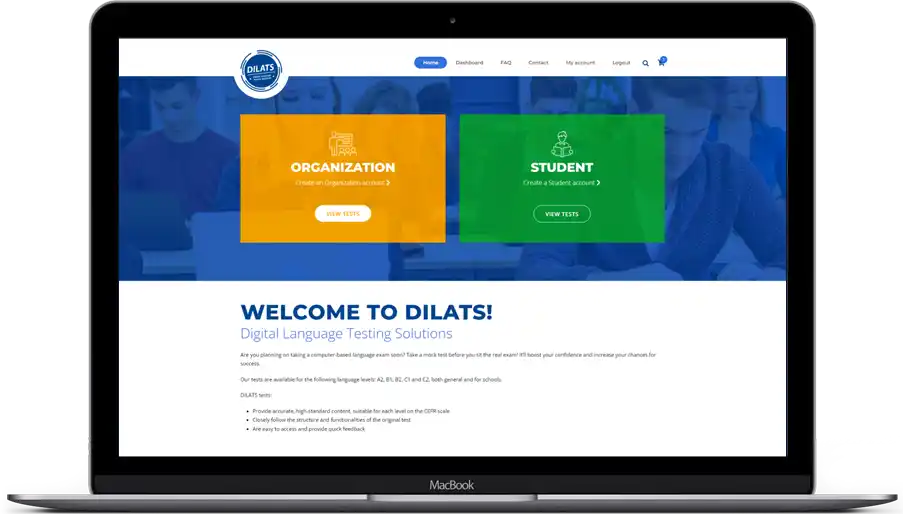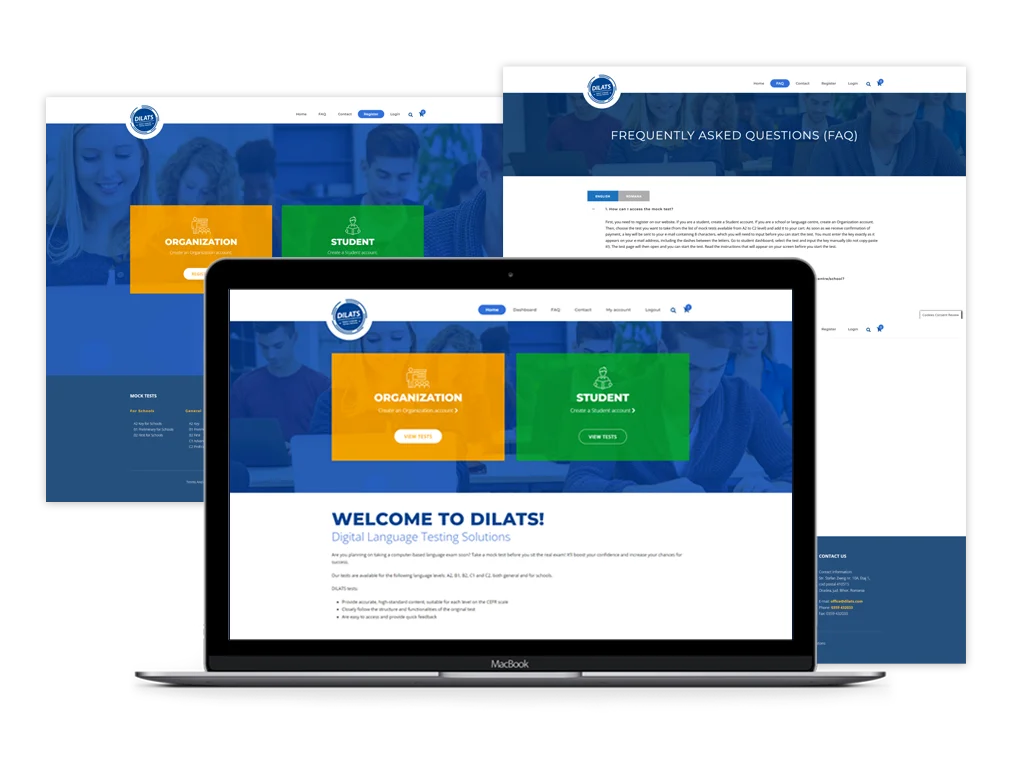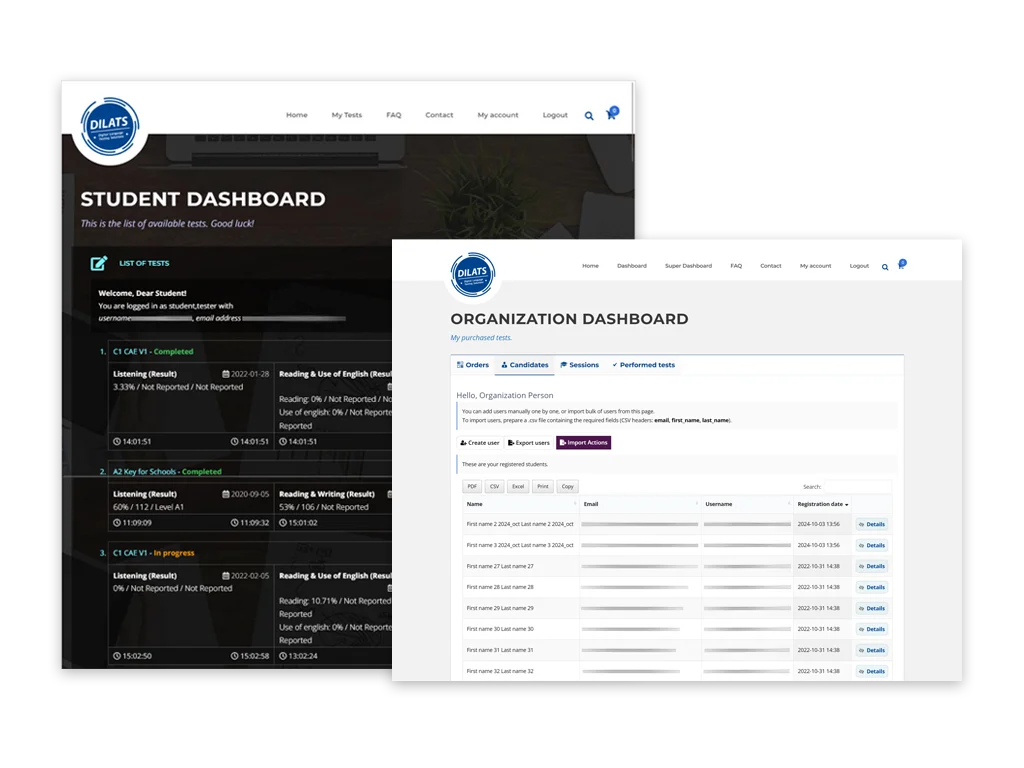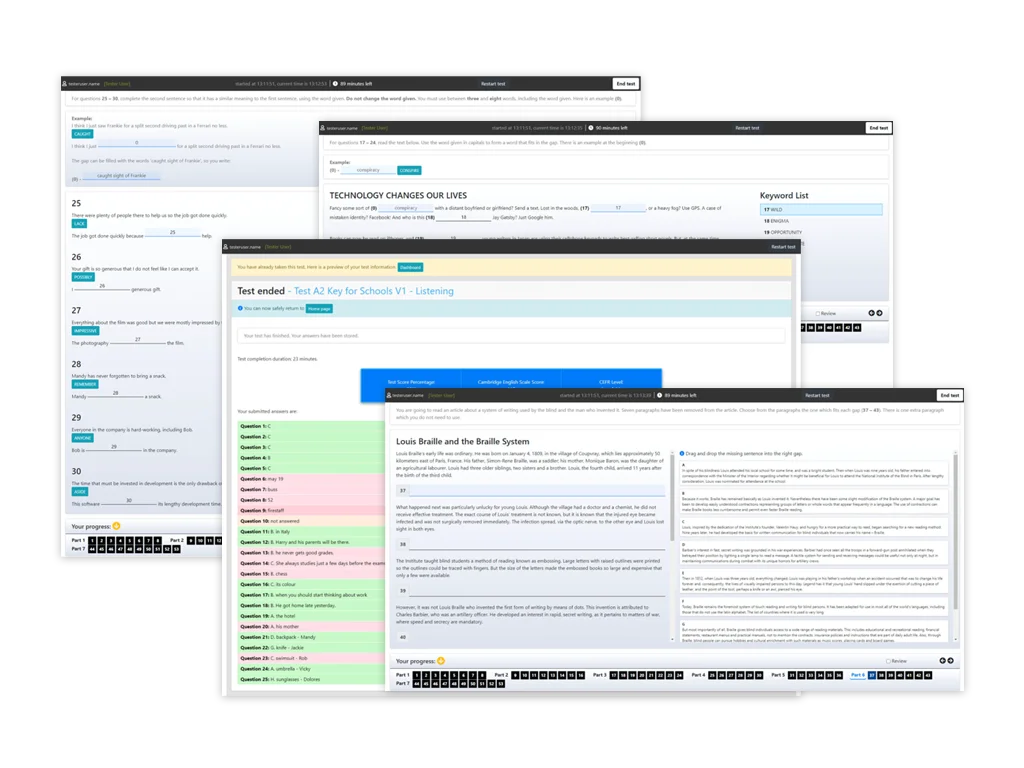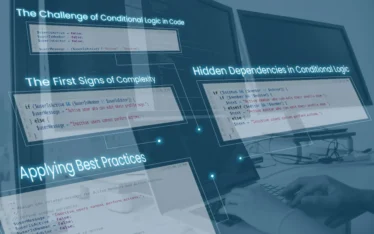Because practicing the exam should feel like the exam.
Dilats bridges the gap between study and simulation.
Many learners know the material but stumble when faced with the unfamiliar format or time pressure of a real exam. That’s where Dilats comes in: a platform built to simulate the real experience and help users prepare with confidence.
The New Language Learning Landscape
Language learning today is more digital, global, and fast-paced than ever. Grammar apps are everywhere, but realistic practice for high-stakes exams—like the Cambridge tests—is still surprisingly hard to come by.
Why Dilats?
The idea for Dilats began when we noticed a gap: mock exams were either too generic or too inaccessible. Learners needed more than just practice—they needed realistic, interactive simulations that felt like the real thing.
That spark became Dilats. We weren’t just building a tool—we were shaping an experience learners and teachers could truly rely on.
Behind the Build – The Developer’s Journey
Dilats began as a small prototype for test simulations. It quickly evolved into a stable, custom platform—with a future-ready architecture and growing potential.
As the developer, my goal was clear: recreate the structure of Cambridge English exams as faithfully as possible, while keeping it intuitive across devices and accessible for users of all ages.
Key decisions shaped the experience:
✅ UX/UI: Clear layout, minimal distractions, and exam-like timing.
✅ Responsiveness: Optimized for desktops and laptops—where most real exam prep happens.
✅ Feedback: A simple but effective system showing scores and correct/incorrect answers.
✅ Scalability: A backend that supports multiple user roles, test sessions, and clean session management for organizations.
There were plenty of challenges—debugging real-time audio issues during live tests (shoutout to that stubborn Listening bug I chased down during a simulation with kids in the room!)—but each fix made the platform stronger.
Now, with a solid V1, we’re looking ahead to a potential V2: better UX, smoother performance, and more flexibility.
Features & Functionality
Dilats supports test simulations for multiple language components: Listening, Reading, Writing, Use of English.
Here’s how it works:
✅ A user purchases a test through our platform.
✅ Eurolingva staff generates unique access keys and sends setup instructions via email.
✅ Once logged in, the user can access their test panel and begin simulation—complete with an auto-timer that ends the session when time runs out. Users also have the option to end the test early if needed.
✅ After completion, users receive a test report with:
– Test Score Percentage
– Cambridge English Scale Score
– CEFR Level
This summary is sent to their email—and shared with staff for any components requiring manual validation (like writing).
A clean, secure process from start to finish.
Impact & Reception
Since its launch, Dilats has become a go-to tool for many learners and language centers preparing for Cambridge English exams.
We’ve seen Dilats support dozens of simulation sessions and hundreds of tests, proving its value both in independent study and institutional settings. For teachers, it streamlines exam prep. For students, it builds confidence through practice that feels authentic.
Future Outlook
The next chapter for Dilats is all about refinement and reach. We’re planning interface upgrades, enhanced analytics for educators, and smoother workflows for learners.
Conclusion
Dilats started as a response to a simple but urgent need: make exam practice real. Today, it stands as a digital bridge between preparation and performance—a platform where learners can grow, teachers can trust, and every test feels like a step forward.
As we get ready for the exam, we also prepare for success.
Want to explore Dilats or run a simulation with your school?
Learn more on Eurolingva’s website
